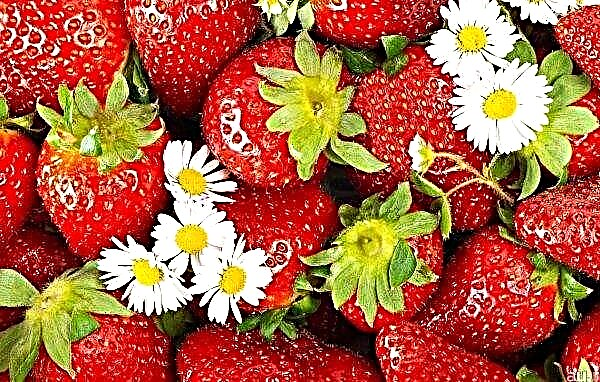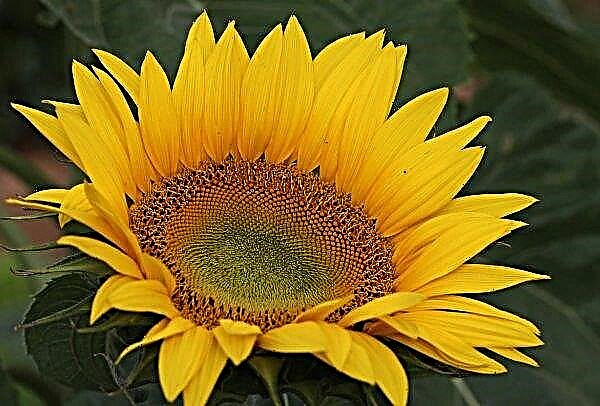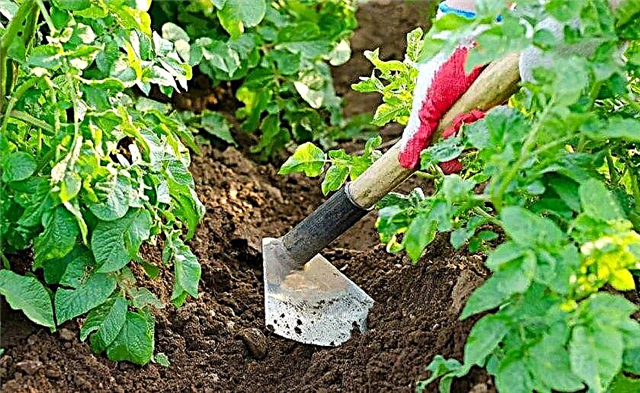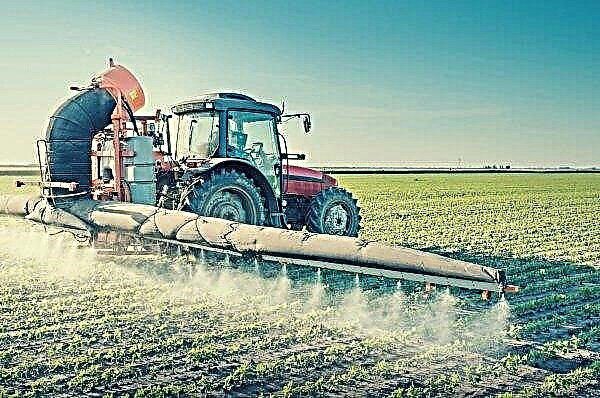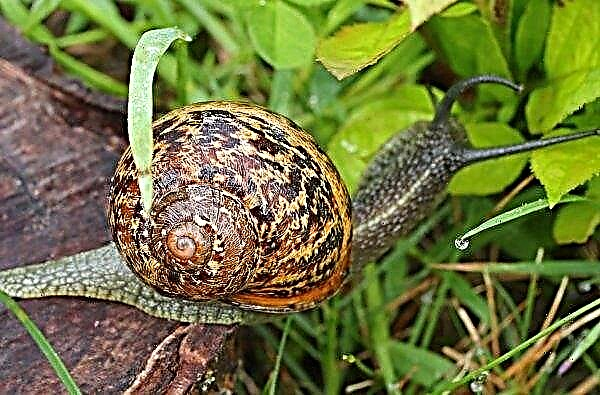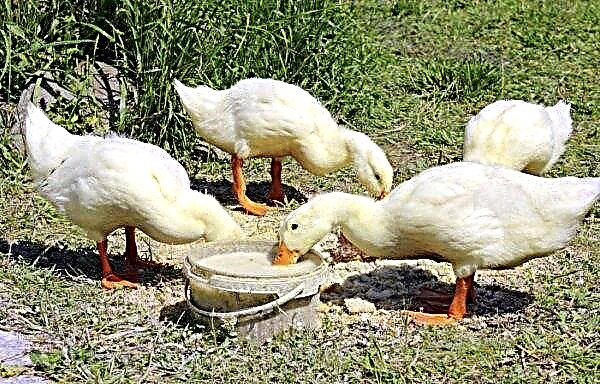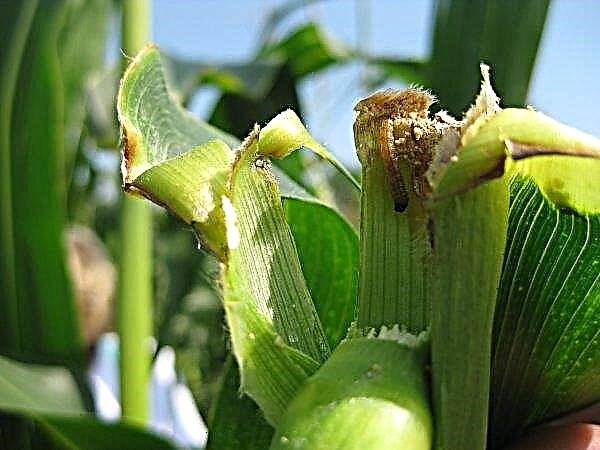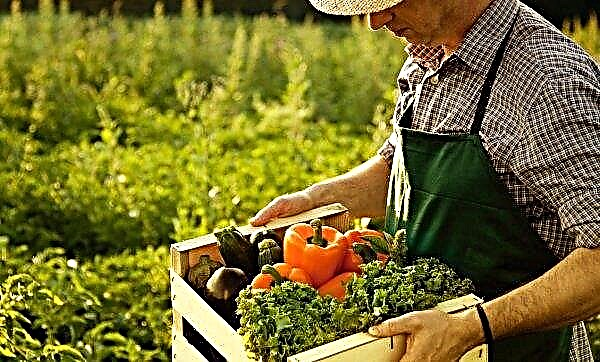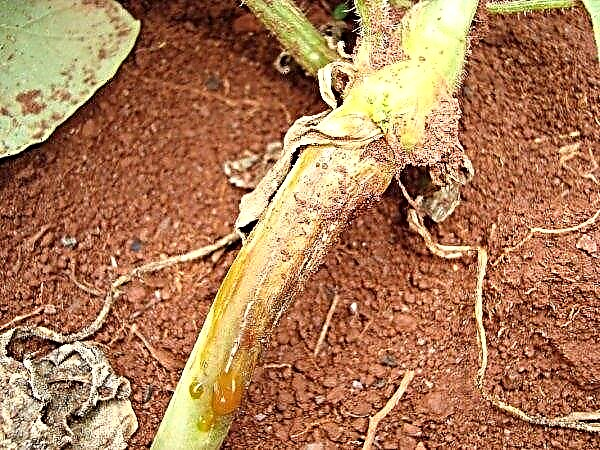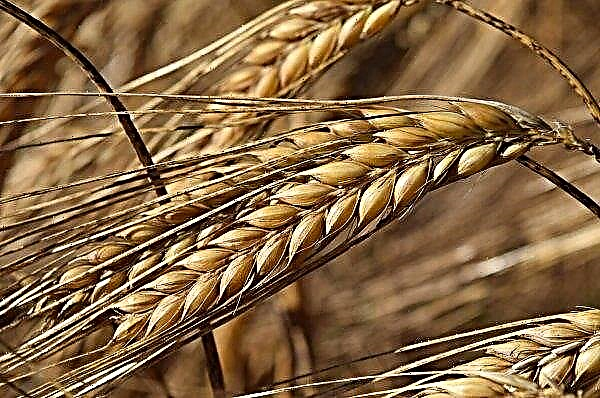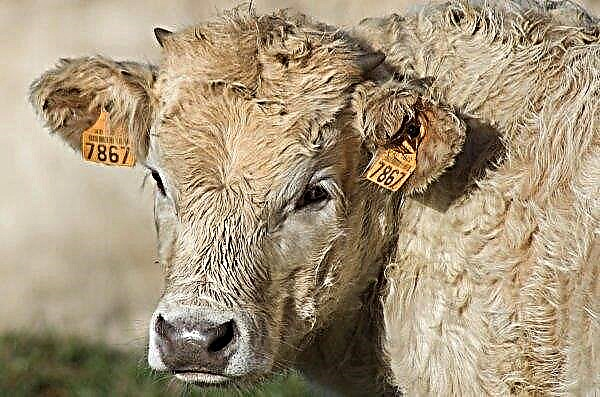Arranging a beautiful green lawn in a local area requires some effort, and growing grass needs proper care. But there are plant varieties that are much easier to grow. One of the types of such herbs is the Polevosnaya shoot, distinguished by its unpretentiousness in care. It allows you to create a decorative lawn, spending a minimum of effort and time. The description of the plant, its advantages and disadvantages, as well as the features of cultivation - further in the article.
Field Description
Under natural conditions, this grass grows in the eastern and southern regions of Europe. The plant forms a thick and fluffy cover on the ground, which can become a real decoration of any garden site.
Did you know? The most expensive lawn in the world is around the government building in the Australian city of Canberra. About 200 thousand dollars are annually spent on its maintenance.
Botanical description of the field:
- The plant is a short-growing perennial cereal, reaching a height of no more than 12-15 cm.
- The rhizome is small; it goes 8-10 cm deep into the soil.
- Creeping shoots (stolons) have an increased tendency to root due to the presence of internodes on them.
- The leaves of the grass are thin, have an elongated shape with a pointed tip. They are collected in small bunches and painted in a saturated light green color.
- The flowering period falls around the middle of summer. At the same time, spikelets 1.5–3 mm long are formed on the plant, having a light green or purple color.
- The seed is nondescript, oval. Its length does not exceed 2 mm.
- Plants grow rapidly, covering a significant part of the territory. As a result of this, a loose sod forms on the surface of the earth.
Advantages and disadvantages of lawn grass
The use of shootweed to create a lawn has its pros and cons, so before sowing such grass, you must familiarize yourself with its characteristics, having studied all the positive and negative qualities of the crop.
Important! It is recommended to equip a lawn from a field at the foot of fruit trees. A dense vegetation cover will prevent contact of falling fruits with the ground, preventing their rapid damage.
- The main advantages of the field are:
- unpretentiousness to the composition of the soil;
- the possibility of growing in partial shade;
- excellent decorative appearance of the grass cover;
- the ability of plants to recover quickly;
- ease of care; no need for frequent mowing;
- ability to retain moisture in the soil;
- increased density of grass, resistance to trampling;
- effective displacement of weeds from the site;
- improvement of soil quality due to microorganisms formed during the death of plants;
- high winter hardiness of the culture.
- The disadvantages of the plant include such qualities:
- in the first year after planting, you can’t walk on the lawn so that the seeds are fixed in the soil;
- during drought, grass should be watered regularly;
- it takes about a month to restore the lawn after severe frosts;
- Grass mowing can only be done with a lawn mower, as the plant has very soft stems.

Compatible with other herbs
Polevoshnaya can be grown as an independent crop, as well as combined with other varieties of lawn grass.
This plant quickly displaces weeds from the site, but is able to successfully grow with such crops:
- pasture ryegrass;
- thin wood field;
- meadow fescue;
- red fescue.

Landing Features
Planting of a shoot of a polevole is carried out by seeds. To ensure good germination of planting material, it is necessary to choose the right place for growing grass, as well as to perform sowing at the appropriate time. The procedure for planting seeds into the soil itself is not particularly difficult, so even an inexperienced gardener can cope with it.
Important! Sowing birch seeds in the ground in hot summer weather is not recommended. When the soil dries, the planting material will not be able to germinate and will quickly die.
Dates and seeding rate
The best time for planting a field crop on the site is the end of April or mid-September. This period is most favorable for the formation of a strong root system of plants, which in turn stimulates leaf growth.
 When sowing grass, it is recommended that certain seed consumption rates per unit area be observed. This will ensure a good density of the lawn without harming the plants, since if the plantation is too dense, the barn suffers a lack of light, nutrients and moisture. The average seeding rate for this crop is 1.5 g per 1 m².
When sowing grass, it is recommended that certain seed consumption rates per unit area be observed. This will ensure a good density of the lawn without harming the plants, since if the plantation is too dense, the barn suffers a lack of light, nutrients and moisture. The average seeding rate for this crop is 1.5 g per 1 m².
Site selection and preparation
Polevoshnaya shoot is unpretentious to growing conditions, but fully retains its high decorative qualities only when planting in suitable areas.
Therefore, a place for a lawn from this grass must meet the following requirements:
- sufficient sun exposure - the culture can grow in small partial shade, but in the complete absence of sunlight it loses an attractive appearance;
- fertile soil - Plants suitable chernozem, sandy loam and loamy soil with a high or neutral level of acidity;
- drainage - The field bark belongs to water-loving crops, but stagnation of water in the soil is detrimental to the state of the root system of plants.

Before sowing seeds, it is necessary to conduct the correct preparation of the selected site.
Important! After treating the soil with anti-weed preparations, sowing seeds of the shoot of the field can be done no earlier than six weeks later. Otherwise, planting material may die from contact with herbicide residues.
It starts about two months before landing and is performed according to this algorithm:
- To clear the territory of garbage, stones, branches.
- Remove weeds along with the root system. To do this, it is recommended to use special preparations (for example, Roundup), and then remove all plant residues from the soil.
- Dig the area to the depth of the spade bayonet. Large clods of earth must be broken up so that the soil is sufficiently loose.
- During digging, add a little compost to enrich the soil with nutrients.
- If moisture stagnation is observed in the soil in the area, then lay a layer of drainage from rubble or gravel at a depth of 40 cm, placing a layer of earth on top of it.
- Level the ground with a rake.
- Tamp the dug up earth with a skating rink or just walk on it to compact the soil.

Sowing seeds
After completing all the preparations for the site, you can proceed directly to embed the planting material in the soil. The seeds of the shoot of the polevole are very small, so it is recommended that they be planted only in clear and calm weather.
For convenience, the planting material is mixed with slightly moistened wood sawdust in a proportion of 1:10, and then the resulting mass is embedded in the soil to a depth of about 1 cm. To comply with the seeding rate, planting is performed using a lawn seeder. After completing the procedure, the soil in the area must be compacted and abundantly watered with warm water.

Care
Polevoshnaya shoot belongs to unpretentious crops, therefore, does not need careful care. But throughout the season, the plant should receive a sufficient amount of moisture so that the color of its greenery remains saturated and bright. To maintain a neat appearance, the lawn needs a periodic mowing, as well as fertilizing with fertilizers.

Watering
Proper irrigation of the barn is crucial for a well-groomed lawn. The roots of the grass are located close to the surface of the soil, so they quickly dry out in hot and dry weather, which in turn can lead to yellowing of the ground part of the grass and even to the death of the stems.
Did you know? In Europe, there are certain standards for decorative lawns. According to one of them in 1 m² high-quality vegetation cover should contain at least 10 thousand blades of grass.
In the absence of rainfall, water the crop according to the following rules:
- if the plot with a field tree is located in the sun, then irrigation is carried out daily;
- when growing grass in partial shade, it is watered once every 3-4 days;
- for a uniform distribution of moisture throughout the site, irrigation is recommended to be carried out using sprinklers;
- lawns are watered in the morning or evening to reduce the evaporation of liquid in the sun.

A haircut
Polevoshnaya is often called lawn grass for the lazy, since it grows quite slowly and does not need regular mowing. But in order to give the vegetative cover a well-groomed appearance, it is recommended to cut it about 3-4 times per season. This procedure is performed using a lawn mower, thus removing old and overgrown stems. Such a cosmetic haircut allows you to make the surface of the lawn smooth.

Mulching and top dressing
In the second year after sowing seeds, it is recommended to mulch and enrich the soil in the area with grass and enrich it with nutrients using fertilizers. These procedures contribute to the better rooting of young shoots, and also stimulate their growth, providing a bright color of leaves of the field.
Did you know? Lawn grass helps refresh the air during the summer heat. It perfectly retains dust particles, and is also able to reduce the ambient temperature by 3-4 degrees.
The basic rules for mulching and dressing a plant:
- the soil is sprinkled with mulch in late April, using a mixture of equal parts of sand, peat and garden soil;
- the first top dressing is introduced in early spring after snow melts, scattering a thin layer of compost on the surface of the lawn;
- fertilizers are applied for the second time in mid-July using store-bought complex preparations according to the instructions indicated on the package.

Winter preparations
Polevosnaya shoot tolerates winter well, therefore, does not need additional shelter. The vegetation cover can freeze out under the influence of low temperatures, but in the spring it quickly recovers and again acquires a decorative look. In order to minimize frost damage to plants, it is recommended that you cut the woodland briefly in the fall.
The choice of a shoot-bearing woodgrass as a grass for lawn decoration has several advantages. The plant is unpretentious to environmental conditions and does not require painstaking care, and with the help of the recommendations listed in the article on planting and growing, even a novice gardener with minimal experience can cultivate it.

